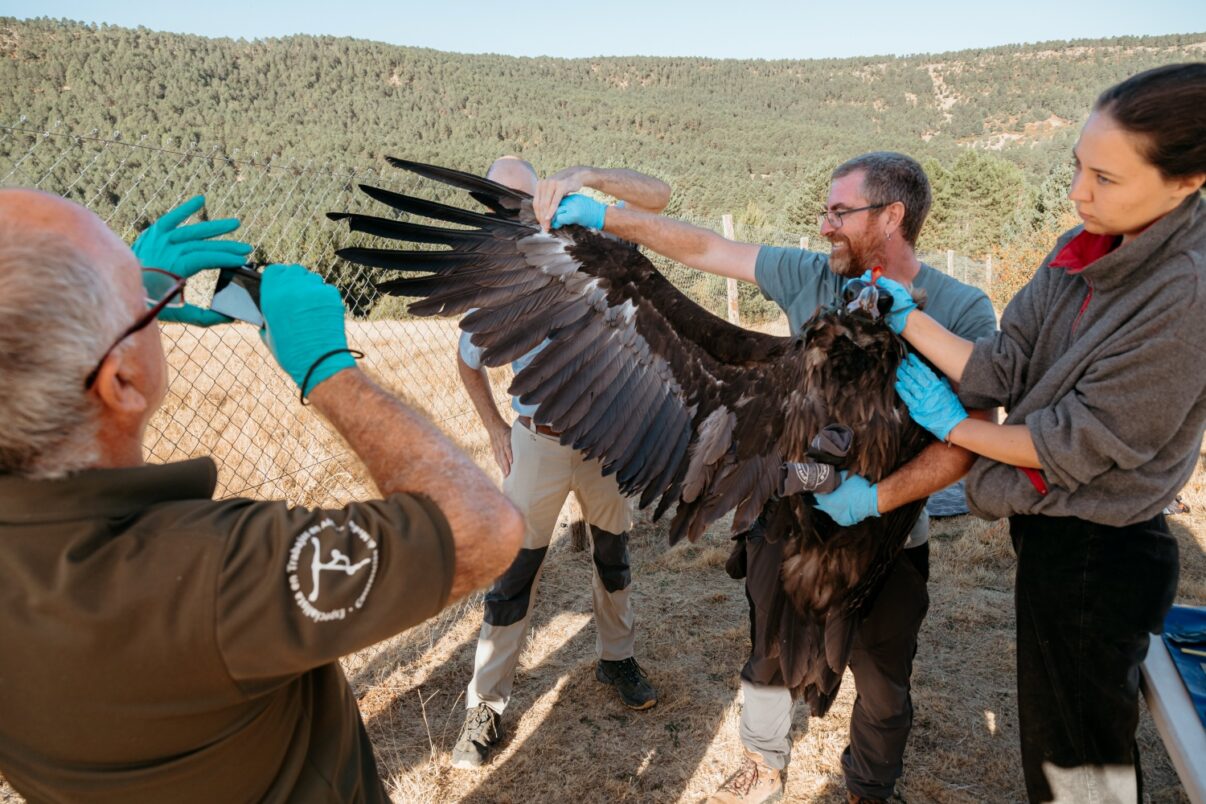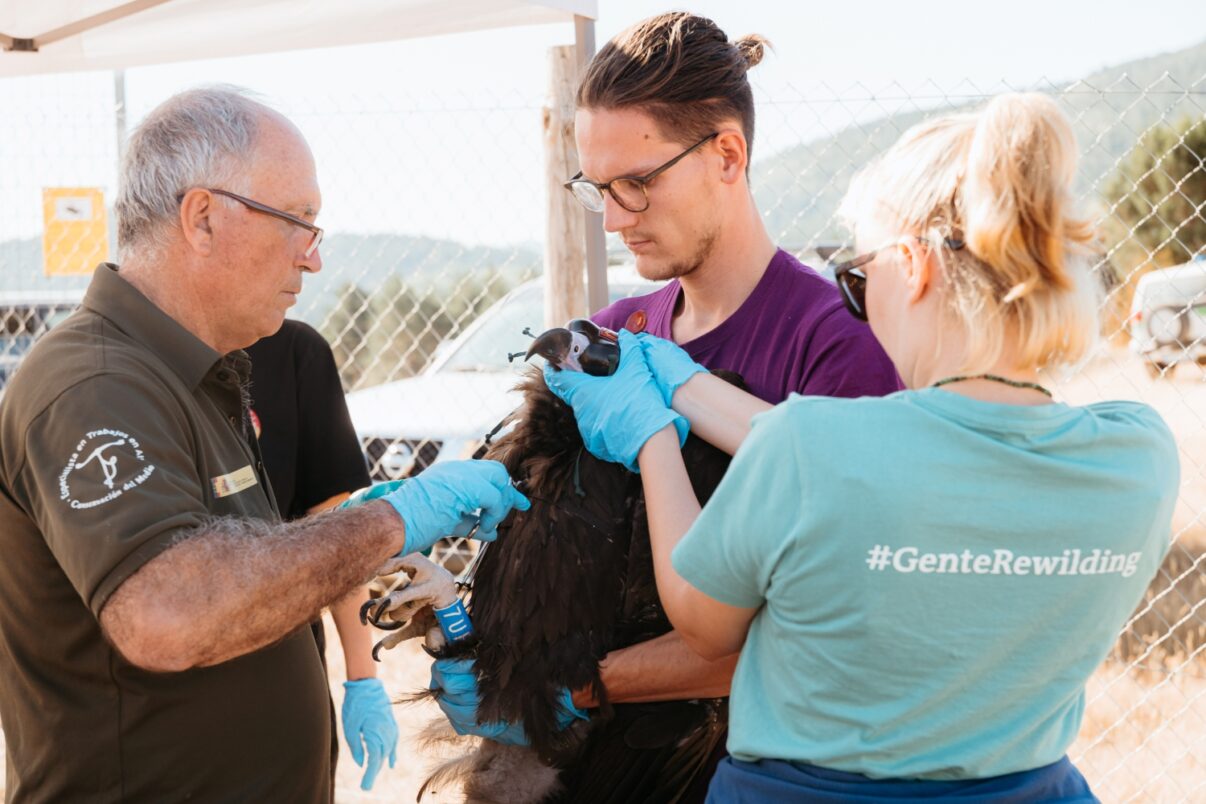Sixteen specimens of the cinereous vulture have just been released as part of the reintroduction programme for this species in the Alto Tajo and Serranía de Cuenca areas. This was the largest release since the programme began in 2020.
The black vulture (Aegypius monachus) reintroduction programme is led by the Department for Sustainable Development of the Regional Government of Castilla-La Mancha and the Alto Tajo Natural Park, with on-the-ground work carried out by Rewilding Spain and the Terra Naturalis Association.

This latest action represents the largest release of cinereous vultures in the area since the launch of the programme in 2020, through which a total of 37 individuals of this scavenger bird have been set free. Moreover, several of the birds released on this occasion are adults already capable of breeding, which increases the likelihood that they will nest next spring and establish themselves permanently in the area.
The cinereous vulture is a threatened species that disappeared from the Iberian Highlands as a resident bird a century ago due to the degradation of forest habitats. Its reintroduction through this programme aims to strengthen the health of the ecosystem, in which vultures act as natural cleaners alongside their relatives, the griffon vulture (Gyps fulvus) and the Egyptian vulture (Neophron percnopterus), whose feeding habits complement those of the cinereous vulture.

The sixteen cinereous vultures released came from wildlife recovery centres in Castilla-La Mancha, where they had arrived suffering from illness or injury. Once rehabilitated, and before being released, they spent several months adapting in an aviary run by the programme within the Alto Tajo Natural Park. The entire process is designed to help the vultures become familiar with the area and choose it as a nesting and breeding site, a crucial stage after which pairs tend to remain permanently in the territory.
To encourage this settlement, the reintroduction programme also includes the management of six supplementary feeding points, 21 nesting platforms installed in as many trees across the Alto Tajo and Serranía de Cuenca, and two life-sized decoy vultures.
As in previous releases, all the birds were fitted beforehand with GPS devices to enable real-time monitoring of their movements. This tagging work was carried out with the support of Víctor García Matarranz, a specialist from Spain’s Ministry for Ecological Transition and the Demographic Challenge (MITECO), and his team, with the collaboration of environmental rangers from Castilla-La Mancha and Rewilding Spain’s volunteers.

The cinereous vulture reintroduction programme in Alto Tajo involves a multi-phase process that seeks to ensure the animals’ maximum welfare and to facilitate their settlement in the area after release. As explained by Jorge F. Layna, Terra Naturalis technical manager for the project, “the recovery of the cinereous vulture as a breeding species in Alto Tajo and Serranía de Cuenca is a model of rigorous work that contributes to the global conservation of this threatened species.”
Meanwhile, Pablo Schapira, Rewilding Spain’s team leader in the Iberian Highlands, highlighted the ecological relevance of the return of this species: “The comeback of the cinereous vulture to the Iberian Highlands is essential for strengthening the food chain and diversifying the ecological roles played by scavenging birds across different species. We hope that, thanks to this collaboration between organisations, we will soon see the cinereous vulture nesting once again in this landscape.”
Related news
- Four cinereous vultures released in the Iberian Highlands to enhance scavenging and biodiversity
- Five new artificial nests to favour the cinereous vultures settlement in the Iberian Highlands
- Cinereous vulture comeback in the Iberian Highlands takes another step forward
